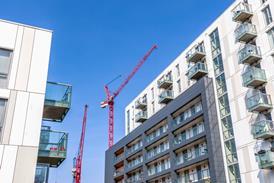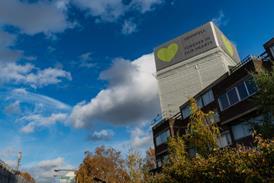- Home
 Staged applications to be permitted for single tower projects at gateway 2
Staged applications to be permitted for single tower projects at gateway 2 What the latest documents tell us about the government’s progress on building safety
What the latest documents tell us about the government’s progress on building safety Grimshaw wins £4.4m job on redevelopment of Battersea Power Station waste facility site
Grimshaw wins £4.4m job on redevelopment of Battersea Power Station waste facility site Landmark 1960s building in Wolverhampton spared wrecking ball
Landmark 1960s building in Wolverhampton spared wrecking ball
- Intelligence for Architects
- Subscribe
- Jobs
- Events

2025 events calendar Explore now 
Keep up to date
Find out more
- Programmes
- CPD
- More from navigation items
Regenerative design and the problem with sustainability jargon

An alphabet soup of terminology can often obscure the real objectives around sustainability, writes Marc Seligmann
As I reflect on the last two years in my role as head of sustainability at Maccreanor Lavington, I’ve grown to recognise the challenges in effectively communicating sustainability concepts to both the public and industry stakeholders. Initial reactions to my new role from friends and family ranged from confusion (“what does that entail?”) to scepticism (“so you’re the head of greenwashing”). It’s disconcerting that despite sustainability being a prominent topic in mainstream media for over two decades, such misconceptions still prevail.
Within the sustainability echo chamber, it’s easy to assume universal understanding of terms like “sustainability”. However, reality paints a different picture, and definitions vary widely. Something like food choice exemplifies this. Are apples from Kent sustainable because they are locally grown but stored in energy intensive refrigeration? Is the pineapple flown in from Kenya sustainable because it provides local work to a disadvantaged community. These scenarios show the nuances of aligning with the sustainable development goals.
…
This is premium content.
Only logged in subscribers have access to it.
Login or SUBSCRIBE to view this story

Existing subscriber? LOGIN
A subscription to Building Design will provide:
- Unlimited architecture news from around the UK
- Reviews of the latest buildings from all corners of the world
- Full access to all our online archives
- PLUS you will receive a digital copy of WA100 worth over £45.
Subscribe now for unlimited access.
Alternatively REGISTER for free access on selected stories and sign up for email alerts


